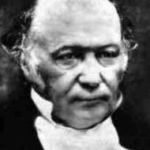Ireland, the land of madcap inventors and world-changing innovators. Here are seven people who made an incredible impact.
Boom! The man who split the atom
Ireland’s only Nobel science laureate Ernest Walton was the first person in the world to split an atom. He was born in Waterford. He studied maths and experimental science at Trinity College and completed his Masters in 1927 before going to Cambridge later that year. He received the Nobel prize for physics in 1951 for his work on splitting lithium atoms, undertaken at the Cavendish Laboratory, Cambridge. Walton moved back to Trinity, spending 40 years there and becoming head of the university’s physics department.
Why is the sky blue?
The first steps towards correctly explaining the colour of the sky were taken by the Irish physicist John Tyndall in 1859. Tyndall began to experiment with light by shining beams through various gases and liquids and recording the results. He realised that the colour of the sky is a result of light from the sun scattering around particles in the upper atmosphere, in what is now known as the ‘Tyndall effect’. It is more commonly known to physicists as Rayleigh scattering, after Lord Rayleigh, who studied it in more detail a few years later.
The biggest telescope in the world
In the early 1840s, the Third Earl of Rosse built the largest telescope in the world (see the main image above for what it looks like today). With it, he discovered the spiral nature of some of the galaxies. From 1845-1914, anyone wishing to witness this phenomenon had to come to Birr. Later, his son Charles Parsons invented the steam turbine, which changed seafaring and eventually led to the invention of the jet engine. TCD’s engineering department has a small Parson’s turbine dating from the 1890s.
They put a man on the moon
On October 16, 1843, Sir William Rowan Hamilton, Ireland’s greatest scientist, who lived and worked in Dunsink Observatory, was walking by the Royal Canal at Broome Bridge when he had a Eureka moment. A flash of inspiration led to the development of a new type of algebra called Quaternions. He scratched his equation in stone by the towpath. Quaternions (so-called because the equation has four elements), is used to describe things moving in three-dimensions, everything from computer graphics to satellites. Without them, man would not have been able to land on the moon.
The atom Boyle
Robert Boyle, author of ‘The Skeptical Chymist’ – outlined the theory that matter was made of atoms. He was born in Lismore, Co Waterford in 1627. Boyle’s law is still taught today. Boyle’s law states that the pressure and volume of a gas have an inverse relationship when the temperature is held constant. If volume increases, then the pressure decreases and vice versa, when the temperature is held constant. Boyle’s study of gases led to the development of atomic theory.
The logic behind the Internet
An Englishman by birth, in 1849 George Boole became the first professor of mathematics in Ireland’s new Queen’s College (now University College) Cork.
Boole’s thinking has become the practical foundation of digital circuit design and the theoretical grounding of the information and digital age. He died at the age of 49 in 1864.
Looking for the speed gene in horses
Equinome, a University College Dublin (UCD) spin-out company was co-founded in 2009 by Dr Emmeline Hill, UCD School of Agriculture and Food Science (pictured) and Jim Bolger, the renowned Irish horse trainer and breeder. The firm began by working with many of the world’s top thoroughbred breeding operations to “provide genomic information to maximise the potential success of individual racehorses”. In other words, they were looking for the speed gene in racehorses. The firm was bought by the Irish equine nutrition company Plusvital in 2015.
-
Bank of Ireland is welcoming new customers every day – funding investments, working capital and expansions across multiple sectors. To learn more, click here
-
Listen to the ThinkBusiness Podcast for business insights and inspiration. All episodes are here. You can also listen to the Podcast on:
-
Spotify
-
SoundCloud
-
Google
-
Apple












